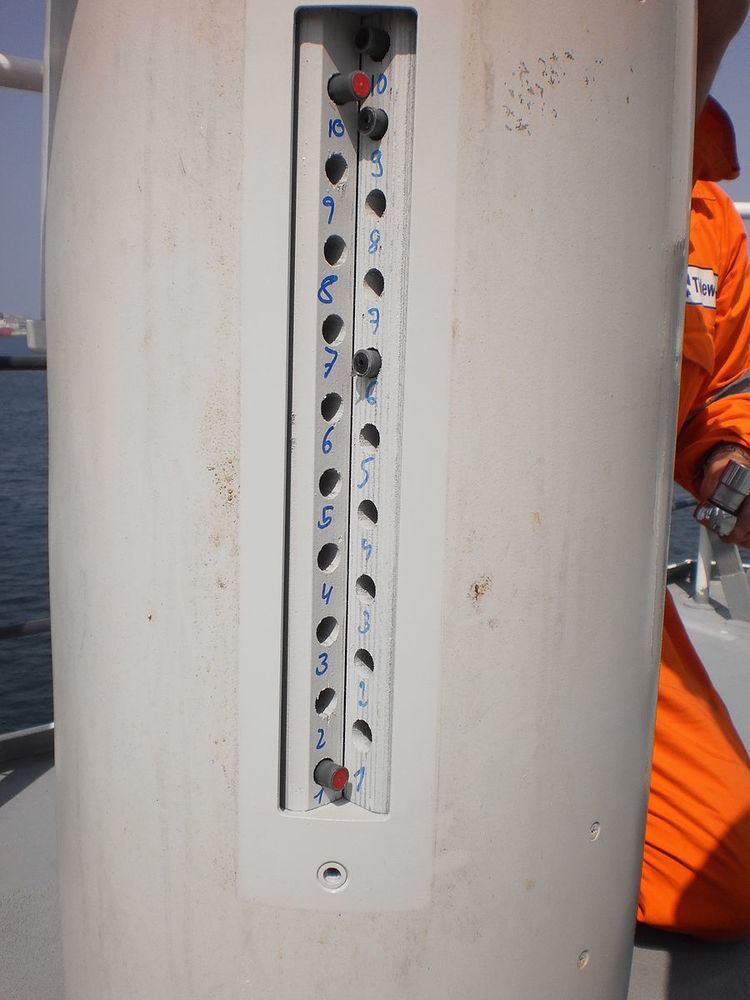 | ||
Magnetic deviation is the error induced in a compass by local magnetic fields, which must be allowed for, along with magnetic declination, if accurate bearings are to be calculated. (More loosely, "magnetic deviation" is used by some to mean the same as "magnetic declination". This article is about the former meaning.)
Contents
Compass readings
Compasses are used to determine the direction of true North. However, the compass reading must be corrected for two effects. The first is magnetic declination or variation, the angular difference between magnetic North (the local direction of the Earth's magnetic field) and true North. The second is magnetic deviation, the angular difference between magnetic North and the compass needle due to nearby sources of interference such as magnetically permeable bodies, or other magnetic fields within the field of influence.
History
Sailing ships generally had two kinds of compasses: steering compasses, two of which would be mounted in a binnacle in front of the helm for use in maintaining a course; and a bearing compass that was used for taking the bearings of celestial objects, landmarks and the ship's wake. The latter could be moved around the ship, and it was soon observed that the bearing could vary from one part of the ship to another. The explorer Joao de Castro was the first to report such an inconsistency, in 1538, and attributed it to the ship's gun. Many other objects were found to be sources of deviation in ships, including iron particles in brass compass bowls; iron nails in a wooden compass box or binnacle; and metal parts of clothing. The two steering compasses themselves could interfere with each other if they were set too close together. The "bearing compass" was eventually sited in a fixed position in a binicale with, as far as possible, an all round view and acquired the name "standard compass" It would nonetheless have a different deviation to the "steering compass" so the compass heading shown on the "steering compass" would be different to the compass heading shown on the "standard compass".
The source of deviation could not always be identified. To reduce this source of error, which was due to induced magnetization in the ship, the surveyor John Churchman proposed a solution known as swinging the ship in 1794. This involved measuring the magnetic deviation as the ship was oriented in several compass directions. These measurements could then be used to correct compass readings. This procedure became standard practice in the 19th century as iron became an increasing component of ships.
Compass Deviation
Compass Deviation is caused by local magnetic effects. On ships and aircraft the difference between North indicated by the compass, "Compass North" and "Magnetic North" (i.e. the direction of the Magnetic North Pole) is called Deviation. Variation is the difference between "Magnetic North" and "True North" and is dealt with elsewhere. The combined result of Deviation and Variation is called Compass Error.
